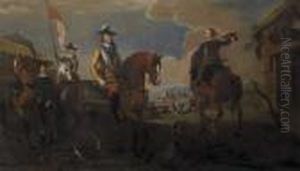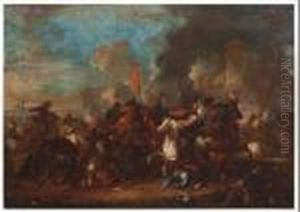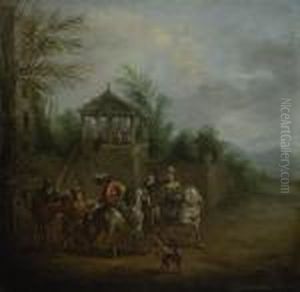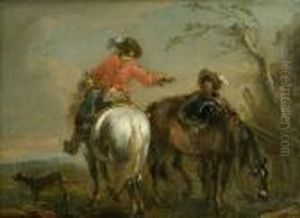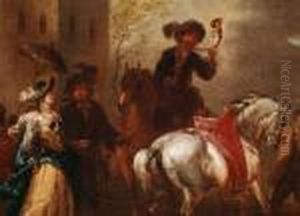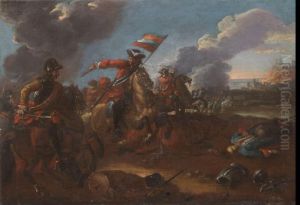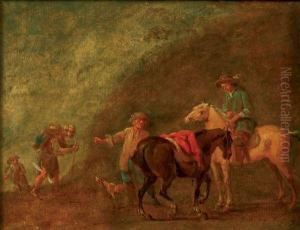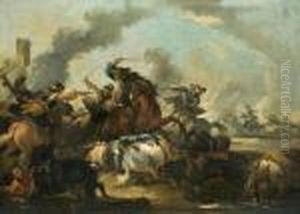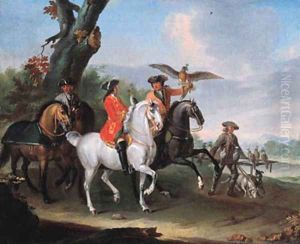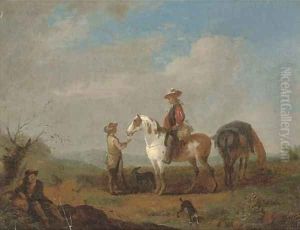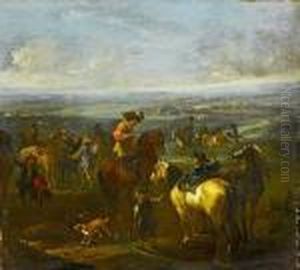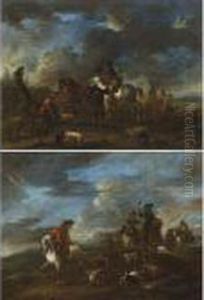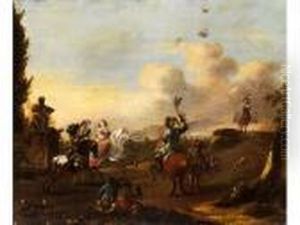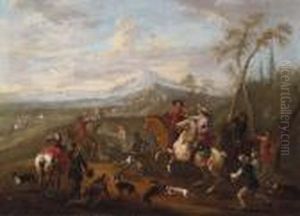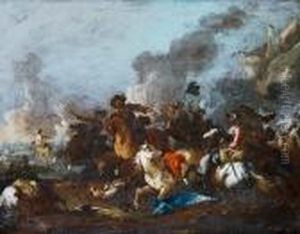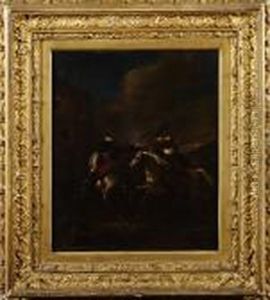August Querfurt Paintings
August Querfurt was an 18th-century Austrian painter, born in 1696 in Wolfenbüttel, Germany, which was then part of the Holy Roman Empire. He was known for his detailed and dynamic battle scenes, hunting scenes, and depictions of military encampments. Querfurt received his initial artistic training from his father, Tobias Querfurt, who was also a painter.
After his early training with his father, August Querfurt traveled to Vienna, where he became influenced by the works of other battle painters like Jacques Courtois, also known as Il Borgognone. Throughout his career, Querfurt's style was characterized by the use of vivid colors and the ability to convey movement and the chaos of battle with great skill. His works often included intricate details of the soldiers' attire and the atmosphere of the battlefield.
Querfurt worked for various patrons and his paintings were sought after by collectors and members of the nobility across Europe. He is believed to have been active in various cities, including Vienna and possibly in other European courts, where his genre of painting was popular.
The artist's work was part of the movement that celebrated military prowess and the glories of war, which was a prevalent theme in the art and literature of the Baroque period. Despite the popularity of this theme, Querfurt also managed to capture the more mundane aspects of military life, with some of his works depicting soldiers at rest or engaging in everyday activities within the camp.
August Querfurt's contributions to battle painting were significant during his lifetime, and his works continue to be appreciated by art historians and collectors for their historical value and artistic merit. He died in 1761, leaving behind a legacy as one of the notable battle scene painters of the 18th century. His paintings can be found in various museums and private collections around the world.








